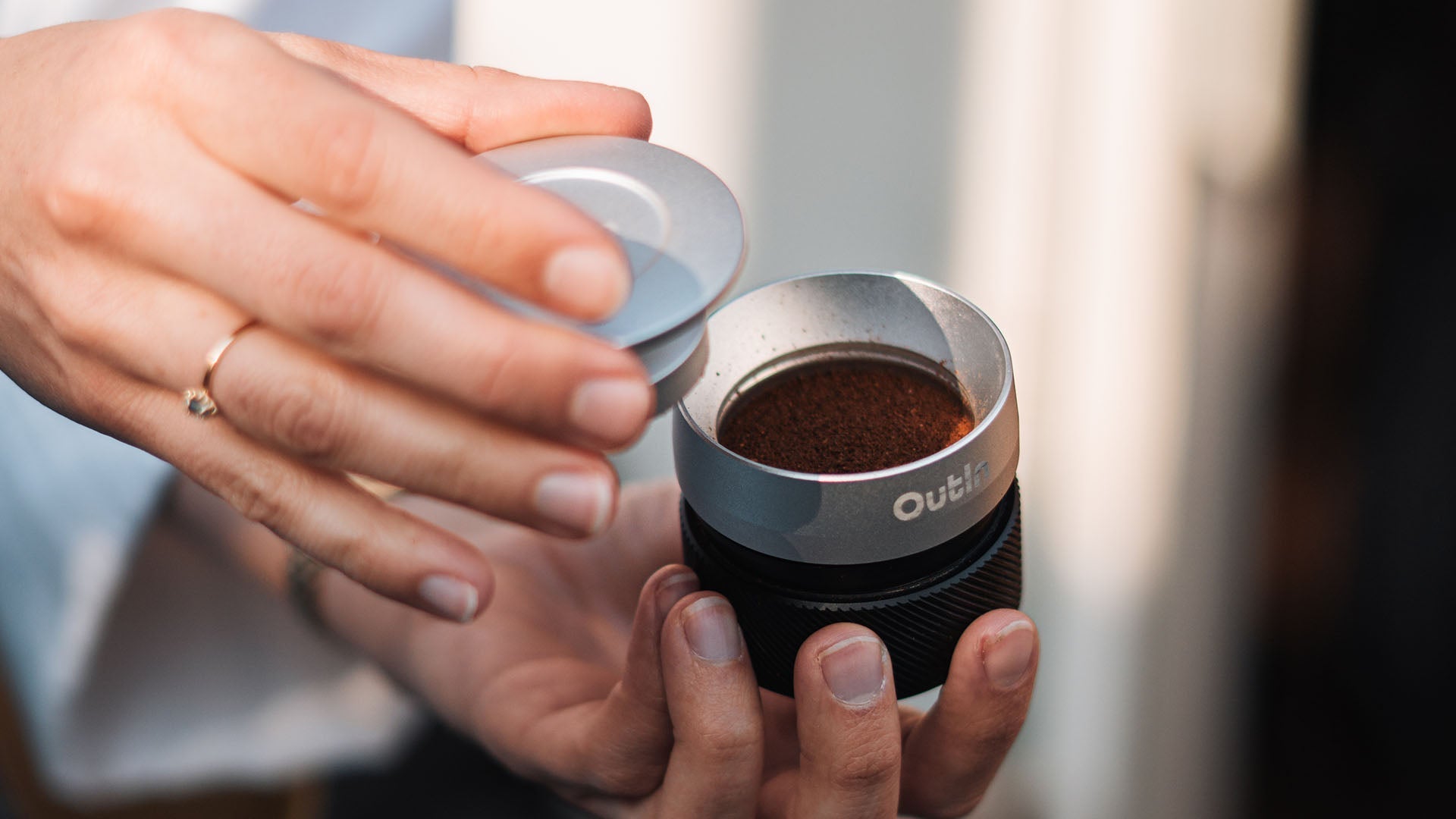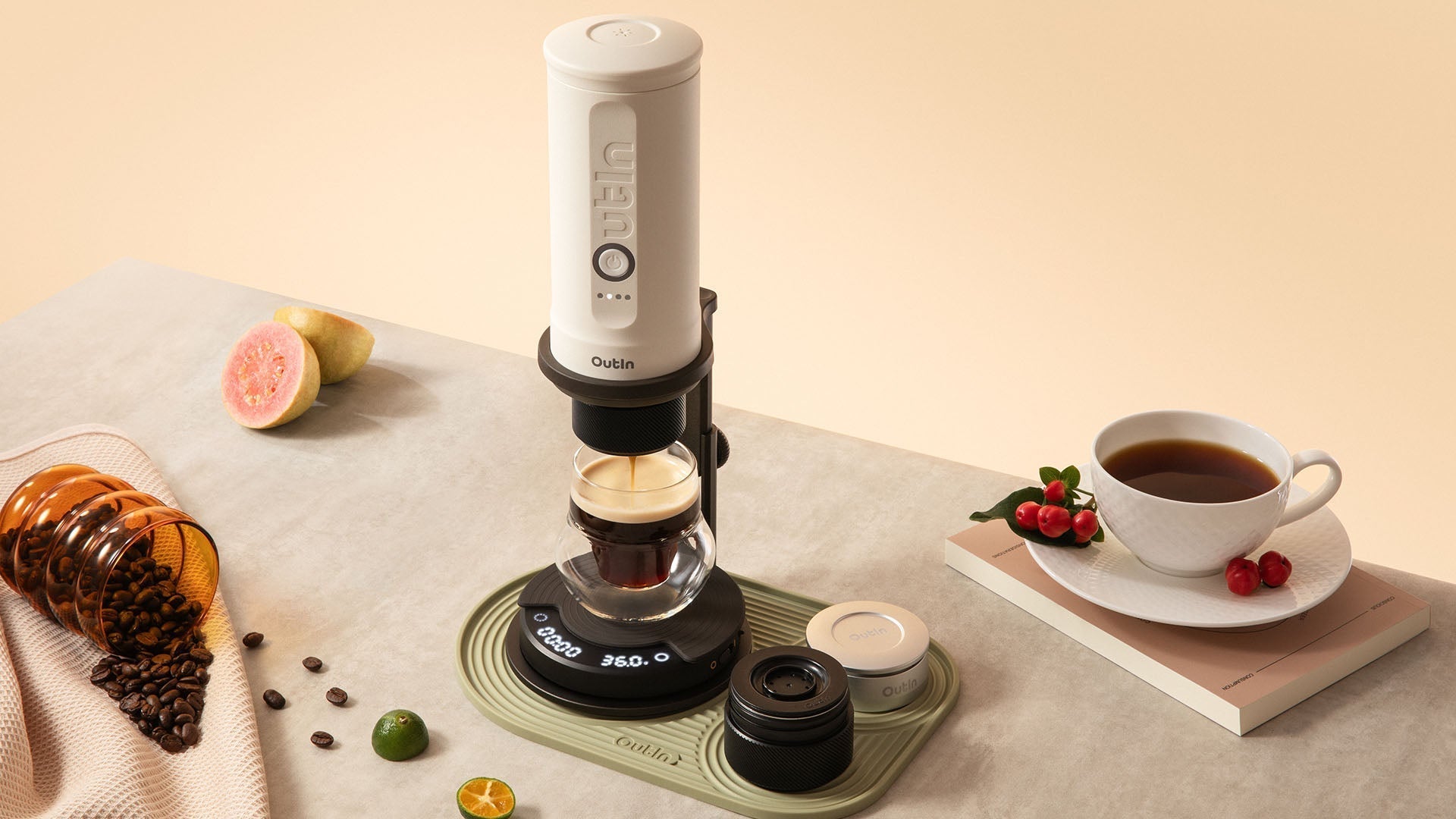Many coffee drinkers question whether their espresso habit might turn excessive. If you love several shots during the day, you might be worried about the safe caffeine consumption level. A commonly asked for good reason is this. While the proper quantity of caffeine can be part of a healthy regimen, too much can compromise your health. This guide will provide you with unambiguous knowledge on espresso consumption limitations, guiding your daily coffee intake in a better direction.
Nano Portable Espresso Machine (OutIn Teal)
How Much Caffeine Is in Espresso?
To determine how many shots are too many, you first need to know what's actually in your cup.
What's in Your Shot
About one ounce or thirty milliliters, a regular shot of espresso has between 63 to 75 mg of caffeine. This means that, when you purchase a double shot, which is typical in many coffee shops, you are ingesting between 125 and 150 milligrams of caffeine. Though it tastes great, espresso actually offers less caffeine per serving than a standard 8-ounce cup of drip coffee, usually containing 95–165mg.
Specialty cocktails sometimes have many shots even if you're monitoring your caffeine intake. One serving of a quad-shot latte has about 300 mg of caffeine.
Espresso vs. Other Caffeinated Drinks
This simple comparison helps put espresso's caffeine content in perspective:
| Beverage | Serving Size | Approximate Caffeine |
| Single Espresso | 1 oz (30ml) | 63-75mg |
| Drip Coffee | 8 oz (240ml) | 95-165mg |
| Cold Brew | 8 oz (240ml) | 153-238mg |
| Latte (1 shot) | 8 oz (240ml) | 63-75mg |
| Energy Drink | 8 oz (240ml) | 70-100mg |
| Black Tea | 8 oz (240ml) | 25-48mg |
Why Caffeine Content Varies
Not all espresso shots deliver the same caffeine kick. The main factors that affect caffeine content include:
- Bean Type: Espresso blends often mix Arabica and Robusta beans. Robusta contains nearly twice the caffeine of Arabica.
- Coffee Shop Differences: Chain cafés typically standardize their espresso, but independent shops may serve different amounts. Some places naturally serve stronger shots than others.
- Preparation Method: How the barista prepares your espresso affects its strength. Longer extraction times generally pull more caffeine into your cup.
These basics help you better estimate how much caffeine you're actually consuming throughout the day—the first step in determining when "enough" becomes "too much."

How Many Shots of Espresso Is Too Much?
Considered too much for most healthy adults is drinking more than five to six single shots of espresso (or three double shots) daily. Health recommendations guiding no more than 400mg of caffeine daily provide the basis for this limit.
The 400mg Daily Limit
Based on thorough studies on caffeine's effects on heart rate, blood pressure, anxiety levels, and sleep quality, health authorities—including the FDA and many medical organizations—basis this advice on Staying within this limit entails tracking your total shots over the day as a regular espresso shot includes 63–75mg of caffeine.
Common in many cafés and home brewing, double shots should be limited to roughly 3 doubles to be within acceptable consumption limits.
Safe Espresso Consumption Patterns
To put these limits into practical terms:
- Morning coffee (double shot): 125-150mg
- Midday pick-me-up (double shot): 125-150mg
- Afternoon coffee (single shot): 63-75mg
This example totals 313-375mg, keeping you under the recommended daily limit. Notice that spacing out your consumption throughout the day is better than having all shots at once.
Why 400mg Is the Magic Number
The 400mg guideline isn't arbitrary. Research shows that most people can consume this amount without experiencing negative side effects. Beyond this threshold, risks increase for:
- Sleep disruption
- Increased anxiety
- Elevated heart rate
- Digestive discomfort
This limit applies to your total caffeine intake from all sources, not just espresso. If you're also consuming energy drinks, tea, chocolate, or certain medications, you'll need to count those toward your daily total.
Timing Matters Too
The way espresso affects your body depends on you. With a half-life of roughly five to six hours, half of the caffeine in your system stays there for many hours. Though you are still under the daily limit, doctors advise against caffeine at least six hours before bed for decent sleep.

Why Your Personal Limit May Be Different
Although the usual range is 5–6 shots, depending on these particular elements, your personal threshold might have to be changed:
Body Size Affects Your Tolerance
With regard to caffeine, your size counts. Minor persons usually feel the effects of coffee more strongly since their body mass is less able to absorb it. While larger people might handle the full 5-6 shots more comfortably, if you weigh less than 150 pounds, you could feel uneasy after just two to three shots. Some professionals advise a basic estimate based on the kilogram of body weight of around 6mg of caffeine.
Regular Drinkers Process Caffeine Differently
Start with just one to two shots if you have never drank coffee to see your reaction. Regular coffee drinkers build a tolerance over time as their bodies improve in handling caffeine. The same amount of espresso might not produce the buzz it used to. For long-term health considerations, however, the 400mg health limit still applies even if you do not experience particularly significant effects.
Health Conditions That Lower Your Limit
Certain conditions require stricter limits:
- Heart conditions: 1-2 shots maximum (150mg)
- Pregnancy: 2-3 shots maximum (200mg)
- Anxiety disorders: 1-2 shots, preferably before noon
- Sleep disorders: Morning consumption only
Medications That Change Your Tolerance
Certain common drugs change your body's caffeine tolerance. Birth control drugs help to slow down caffeine processing, hence extending the effects. A few antibiotics and antidepressants might also cause caffeine to feel stronger than normal. If you use drugs regularly, find out from your doctor whether they might interact with caffeine and whether you should cut back on your espresso intake.

Signs You've Had Too Much Espresso
Numbers aren't the only way to tell if you've reached your limit. Your body provides clear signals when you've had too much caffeine, even if you haven't counted your shots.
Key Warning Signals
The most reliable physical indicators include a noticeably rapid heartbeat, shaky hands, and a general sense of restlessness. Many people also experience digestive discomfort or headaches when they've exceeded their personal threshold.
Mentally, you might find it hard to concentrate despite feeling alert, or notice unusual irritability where small things suddenly seem much more annoying. Anxiety can increase, ranging from mild unease to significant worry.
When to Cut Back
If you notice these symptoms after your espresso, you've likely found your personal limit, regardless of whether you've had 2 shots or 5:
- Heart palpitations or racing pulse
- Significant jitteriness that interferes with tasks
- Sleep problems, even from morning consumption
- Unusual irritability or anxiety
Everyone's response to caffeine varies. For some people, these warning signs might appear after just 2 shots, while others might handle more. Listening to your body often provides more personalized guidance than following general rules alone.
Rather than pushing through these symptoms, take them as valuable feedback about your individual tolerance. Reducing your intake slightly can help you enjoy espresso's benefits without the uncomfortable side effects.
Know Your Espresso Limit!
Staying under the advised 400mg caffeine limit, most healthy adults can comfortably drink 5-6 single shots (or 3 double shots) of espresso daily. Your physical size, health issues, and medications, however, could all affect your personal threshold. Regardless of the precise count of the shots, pay heed to warning indications, including a racing heart, nervousness, sleep issues, or excessive anxiety; these signals assist you in spotting when you have taken too much. Discovering your unique limit enables you to experience the advantages of espresso without unpleasant side effects. Knowing this will help you to keep appreciating your coffee while safeguarding your health.





Leave a comment
This site is protected by hCaptcha and the hCaptcha Privacy Policy and Terms of Service apply.